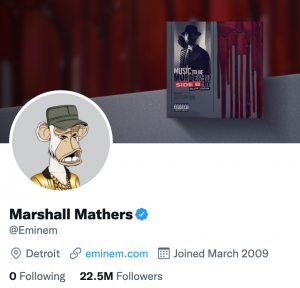Elon and Twitter – A Match Made In Heaven… Or Hell?
On Monday, the board of Twitter accepted billionaire Elon Musk’s $44bn (£34.5bn) takeover bid. Only two weeks ago Musk made the shock bid claiming Twitter had “tremendous potential” that only he could unlock.
An avid Twitter user himself, Mr Musk boasts an audience of over 83.3m followers. His love of Twitter leads him to tweet prolifically, sometimes with controversial opinions and occasionally with catastrophic consequences. He was previously banned from tweeting about Tesla affairs by the SEC (Securities and Exchange Commission) after one tweet wiped $14bn from its share price. In another instance he was sued for defamation following a tweet he wrote about a cave diver, in which he referred to him as “pedo guy” (the diver lost).
“Free speech is the bedrock of a functioning democracy, and Twitter is the digital town square where matters vital to the future of humanity are debated,” is how Musk describes his view on Twitter. Perhaps a little worryingly, Elon’s definition of freedom of speech proposes less moderation for his Twitter 2.0. Many Republicans, who have long felt that Twitter’s moderation policies favour the freedom of speech of left-leaning viewpoints, rejoiced.
What will he do with the site?
Perhaps most notably, at present, Twitter’s main business model is ad-based – but Musk wants to change this. He’s more interested in subscriptions, which could prove a hard sell in an environment where all the main social networks are free-to-use. Twitter users may decide they prefer for their data to not be used to monetise them and they’re willing to pay for that – but it’s a gamble.
He also likes crypto currencies. Could he use the platform to incentivise payments in volatile, unprotected currencies such as Bitcoin?
What does this mean for users?
Just these few changes could change Twitter’s demographic enormously. For casual personal pleasure users, this new environment could quickly become unaffordable, volatile and all too complicated – making the way for users of servers such as discord and online forums to switch to Twitter now that the content restrictions are on their way out.
Musk’s Twitter would be a very different landscape for its current 300 million users. The move could see him reinstate Donald Trump, who currently has a permanent ban – and given that Mr Trump’s own attempt at a social network, Truth Social, appears to be floundering, he would probably be delighted to return.
Musk’s series of changes also include a relaxing of its content restrictions as well as the eradication of fake accounts. Some other less drastic changes he has proposed are the suggestions of allowing longer posts and introducing the ability to edit them after they have been published. Whilst this is beneficial now for tweets that could potentially cause offence, the new rules will see no use for this feature in such a sense.
Money talks
Mr Musk is the world’s richest person, according to Forbes magazine, with an estimated net worth of $273.6bn, mostly due to his shareholding in electric vehicle maker Tesla. He also leads the aerospace firm SpaceX and contributed to the success of PayPal. He is not interested in making money out of the site, but I suppose as a multi-billionaire you can have the occasional expensive hobby?
The takeover is expected to be finalised by the end of this year, but what are your thoughts? Will you still continue to use Twitter? Is this a step in the right direction or a total disaster move for the site? Get in touch with us and let us know – ironically! – via Twitter.
Featured image courtesy of Flickr: https://www.flickr.com/photos/nvidia/16660212029







